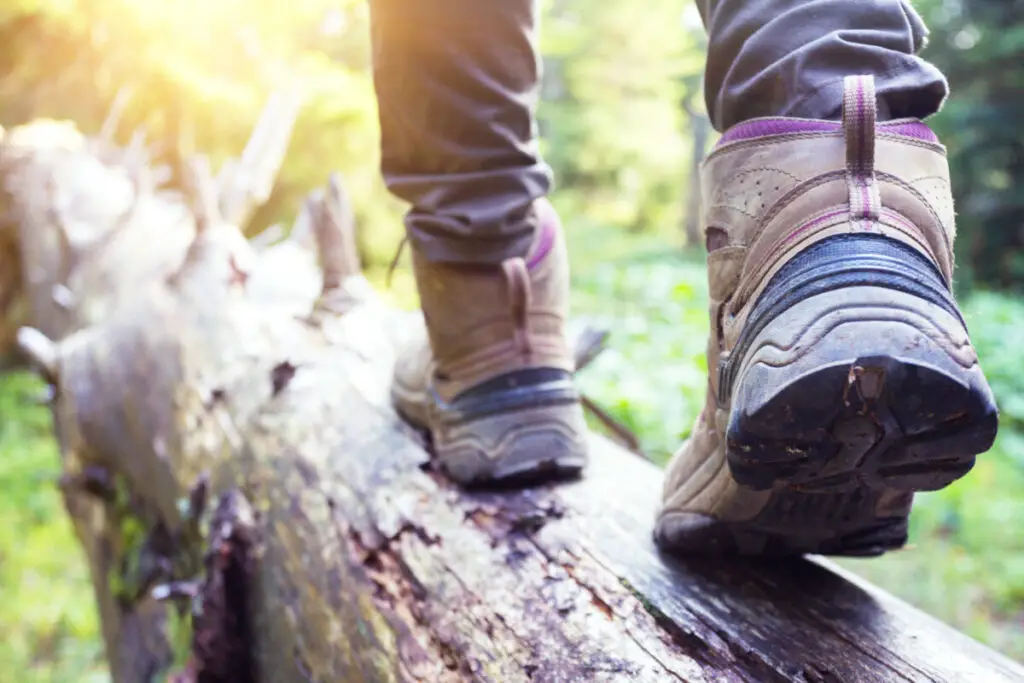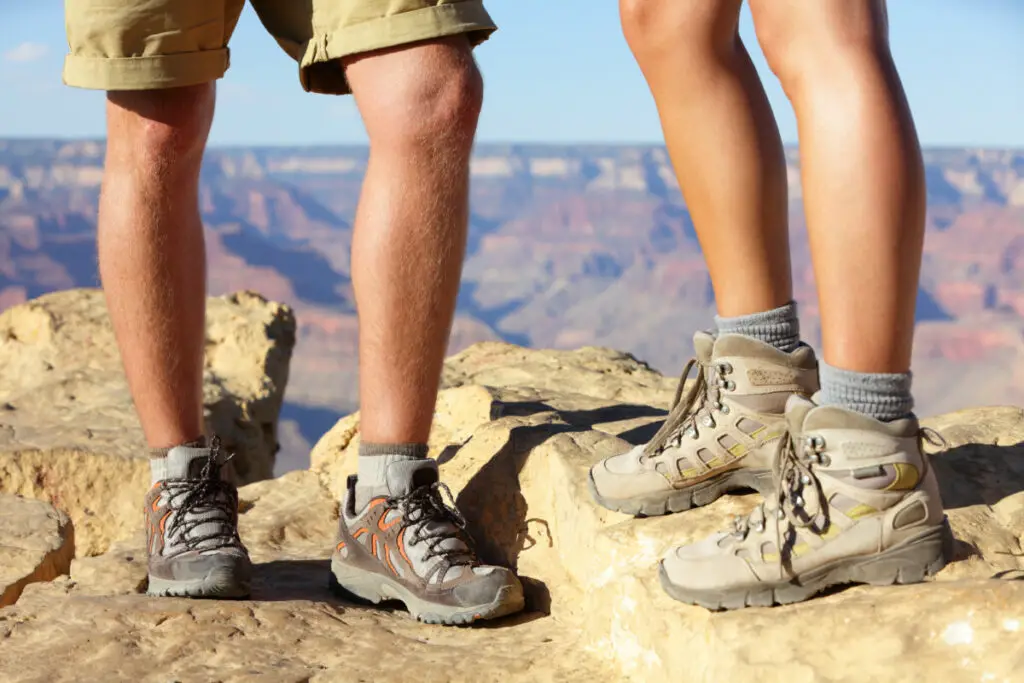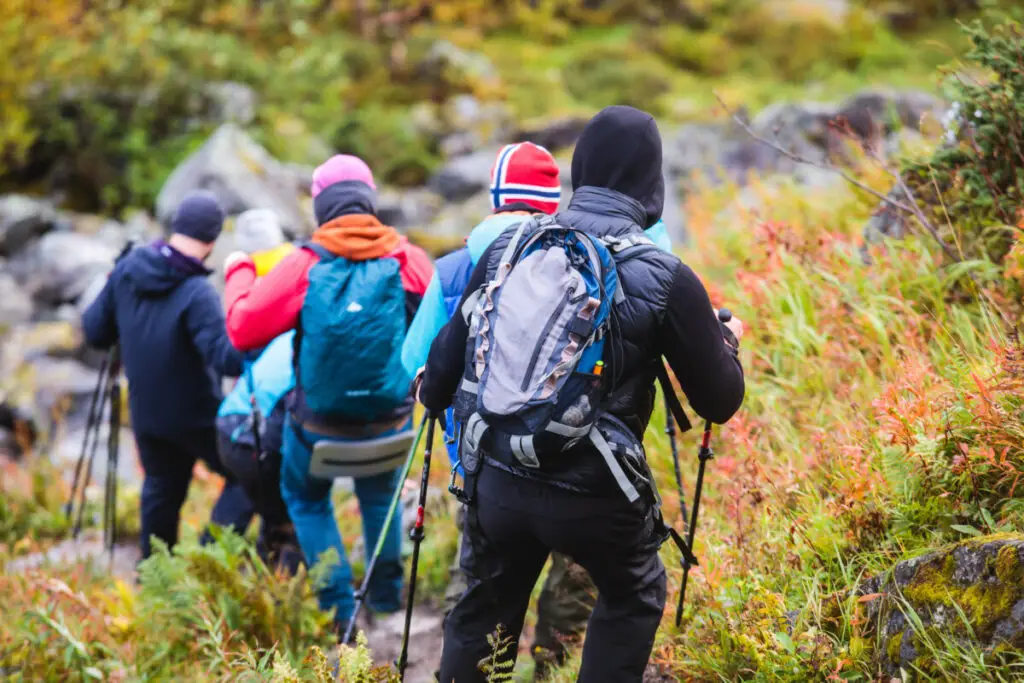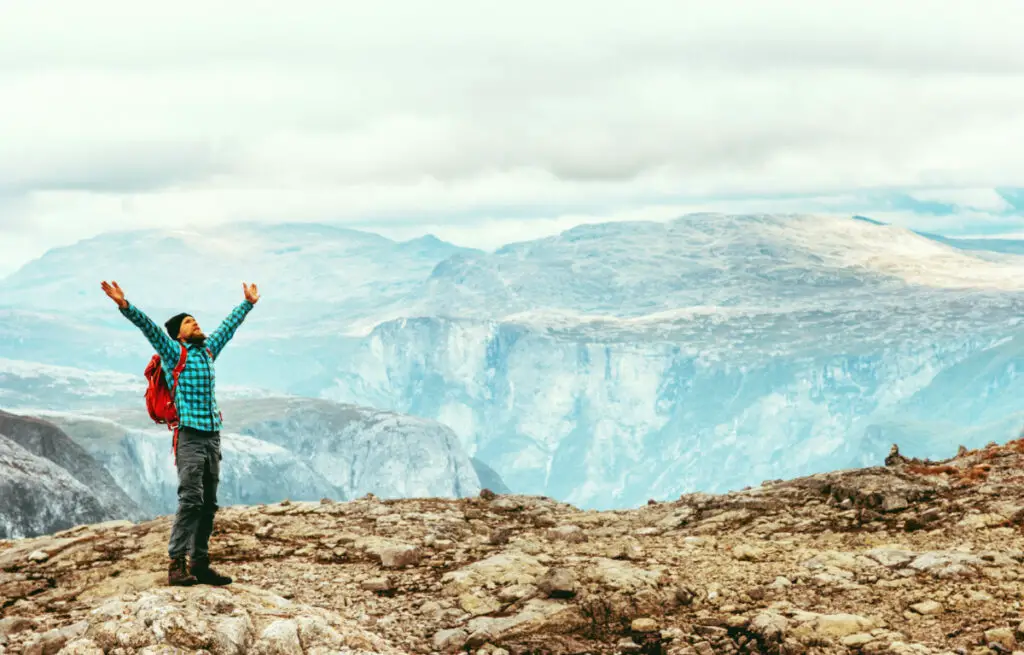
Enjoying the outdoors should not be marked by pain! Get a good pair of hiking boots to keep doing what you love without the back pain.
The best hiking boots to wear with a bad back have good foot and ankle support and a lot of cushion to prevent muscle shifting and uneven treading. This will prevent pain from flaring in the back as well as the joints. Hiking boots should fit properly and be broken in before use.
You can still hike with a bad back if you take care of your joints while exercising. Issues with the lower joints can spread and affect other areas, like hips and backs, so prevent any discomfort before it comes. Good gear can make or break a hike, and be the difference between a lovely walk outside and a painful flare-up.
Causes of Back Problems
Bad backs affect almost everyone at some point in their lives. This can be caused by a variety of factors. Certain joints just soften with age and become more susceptible to overuse. Sometimes overstressing or misuse of a muscle group can make that muscle group weaker and more painful. In the case of a bad back, pain is caused by injuring the tendons, muscles, and ligaments in the back and around the spine.
Exercising can help alleviate the pain and stiffness, and it can gently work out muscles and keep them from stiffening. Not all exercise for backs is superior, however. Heavy lifting can make a bad back worse, as it strains the muscles in the back, causing flares of pain and stiffness. Hiking is a great way to get some exercise without putting too much strain on your back. However, you’ll need to make sure that you’re still taking care of your body while you hike.
Hiking often requires walking across uneven terrain, which in turn puts strain on different muscle groups. You might not think your feet are connected to your back pain, but your back is affected by movement all over your body. When weight isn’t distributed evenly around the body, that puts stress on your back.
Hiking can also come with the risk of slipping, tripping, and twisting your ankles. These things can make your back pain flare up, so don’t take on more than you can chew. Hiking boots can only help you so much on some of the tougher trails. There are lots of flat, beautiful, challenging hiking trails that won’t require you to hurt yourself.
You need to make sure you’re walking as evenly as possible, and not stressing out certain muscles disproportionately. When you take care of your joints, you’ll feel a lot better about that hike, and can get some much-needed exercise that may help you stretch out those stressed muscles.
If your back is in a lot of pain, don’t be afraid to take it easy. You can use heat or cold to treat your pain and stay off your feet. You don’t want to make the problem worse. Listen to your body, especially when choosing a pair of boots and picking a fun exercise. You’ve got this!
How to Choose a Good Shoe for a Bad Back

You may be wondering what kind of shoe is best for your back. The first thing you should know is that flat shoes are out. Just like the bottoms of your feet aren’t flat, neither should the bottoms of your shoes be. Your feet need support around the ankles and the arches, and flat shoes just don’t offer that.
You need to make sure that your shoes distribute your weight evenly. Now that you have shoes with proper arch support, you’ll need a lot of cushion. Hiking on hard ground can be rough on your feet and back. You need something soft to take care of your feet.
A hiking boot should offer your ankles security, along with your feet. You’ll want something that keeps your ankles in place and not knocking around and stressing your joints out. Look for something with ankles support, and lace up your hiking boots to your ankles.
You should make sure all of your shoes with laces are laced up as high as they can be. People often miss the top holes to lace their shoes, and this can come back to bite you later.
When you choose a boot, make sure it’s tight enough! Loose shoes can give you blisters, and shift your weight around. Shifting around from side to side in a pair of shoes is a sign your shoe isn’t the right size or not laced properly.
You want your body weight to be even and not move so all of your muscles work together and don’t strain one or two particular muscles.
You’re going to need some strong treads as well. Treads in a boot keep you from slipping. Besides the obvious hazard of slipping and falling, slipping can stretch out muscles and tendons in your back. Plus, falling on your back will hurt whether or not you have a bad back.
Your toes should have some wiggle room! You want no movement around your ankles and heels, but your toes could use a little wiggle room. This will improve your balance and keep you on your feet longer.
One of the best shoes for back pain are tennis shoes, which provide support and comfort. if you can’t find a pair of hiking boots that give your feet what they need, you might consider tennis shoes. Tennis shoes are less helpful on rough, steep, and rocky terrain as they don’t give your ankles as much support or have as sturdy treads as boots, so choose wisely!
If your back pain is especially bad, you can look into getting prescription orthotics or special insoles that specially fit your feet. These will give your feet and joints that extra support that regular shoes might not. This isn’t completely necessary for hiking, but if exercise is your passion and back pain is consistently holding you back, you might want to consider taking that extra step. Listen to your feet, you’ll find they know more than you do sometimes.
Impact of Footwear on Back Problems

Your feet support all of your weight, so they can affect your entire body. Exercise that requires lots of walking or running sends shocks up the bones in your leg.
Some footwear can absorb these shocks and keep them from affecting you. If the boots or shoes don’t absorb them, the shocks can travel up and into your spine. The bones in your spine are protected by discs that separate them, but the discs can get damaged over time.
When the discs are damaged, you will feel the full effect of those shocks. You may also start feeling pain in your knees, Achilles tendons, and calves if you wear bad shoes for too long. If there’s any part of your body that will make or break you, it’s your feet. They really impact every other part of your body, so pain anywhere may be caused by your feet.
High heels are one of the worst things you can do to your feet. They put all of your body weight on a small point on your feet. This point will start to hurt after a while, as anyone who’s ever worn heel will gladly tell you! Lower your heels to take better care of your feet and joints long-term.
Shoes with too high or too low arches are another culprit for your pain, as they don’t let your feet move naturally, and don’t spread your weight the way it should be. You can use insoles to correct your arch support if your shoes don’t have enough naturally.
The muscles in your feet connect to the bones in your feet, which in turn are connected to leg bones and your pelvis. Your pelvis, or hip bones, supports your spine, so the way your hips are placed affects your back pain. You want your hips to be as even as possible. This is why you shouldn’t wear mismatching shoes, because then your hips won’t be level and put unnecessary strain on your back.
You can get inserts for your shoes that improve their support. If you are wondering what kind of inserts you might need, check the insides of your shoes. Areas in your shoes that are more or less worn tell you where your feet are getting the most stress. You want to make sure no part of your foot is getting overstressed. Just because a pair of shoes look new on the outside doesn’t mean the insides aren’t worn away and damaged.
It is important to take care of every part of your body because everything is connected through ligaments, tendons, bones, and muscles. Take care of yourself, and you’ll find that like a pair of shoes, you will last a lot longer if you do.
Hiking Tips for Bad Backs

If you have the right shoes, what else can you do to keep hiking with a bad back? For your feet, try stretching them out before and after exercising. A hot water bath with some Epsom salt can also do wonders for sore muscles!
Try to make sure you are keeping your muscles warm. Working a cold muscle increases your chances of pulling that muscles, so if you are cold-weather hiking, dress warmly. Consider bringing a hot water bottle or another source of heat to soothe your tight muscles.
Overworking your muscles can cause a lot of pain, so if you have any kind of chronic or persistent pain, take it easy. Try to find an exercise that puts less stress on your bones and joints, like swimming. Hiking can be a lot of fun, but the pain isn’t.
Stay hydrated! Your body is over 50% water, so you need to drink lots of it. Humidity and cold weather can prevent you from realizing how dehydrated you are, but you still feel the effects of needing a drink. You may not realize that you are still losing water even if you aren’t soaked in sweat. If you weigh yourself before and after exercise, that will tell you how much water you lost during the exercise. Try to drink your way back to your original weight, but slowly. Water drunk too fast can’t be absorbed, so it’s better to drink smaller amounts in more intervals throughout the day.
You might already know that checking the color of your urine is the easiest way to see if you are dehydrated. The darker it is, the more water you need. Drink lots of water, and take a bottle with you hiking to stay healthy.
Water does a lot in the body that can prevent pain. It can improve blood flow, and it can help cushion your muscles and bones, which will put less stress on them. It also helps to move nutrients around the body, which keeps every part of you healthy in the long term.
You should give yourself a good amount of recovery time following your exercise. If you exercising intensely, like a run, take a walk after to let your heart rate ease back into rest. Lying down immediately after exercise can be rough on your heart since it keeps having to switch between intensity and rest.
Try doing some back stretches before and after you exercise. Stretching out your muscles will prevent stiffness and let out some of that stress. It can also help strengthen your muscles so they ache less when you exercise again.
Don’t carry a heavy backpack if you can avoid it. The weight can pull and compress muscles in your back and cause pain. Travel light, and if you do have a backpack, make sure the weight is distributed evenly.
Hiking, when done right, can improve pain, as it strengthens your muscles and improves circulation. Don’t let pain keep you from what you love, and take care of your body so you can keep hiking, running, and walking without pain!

